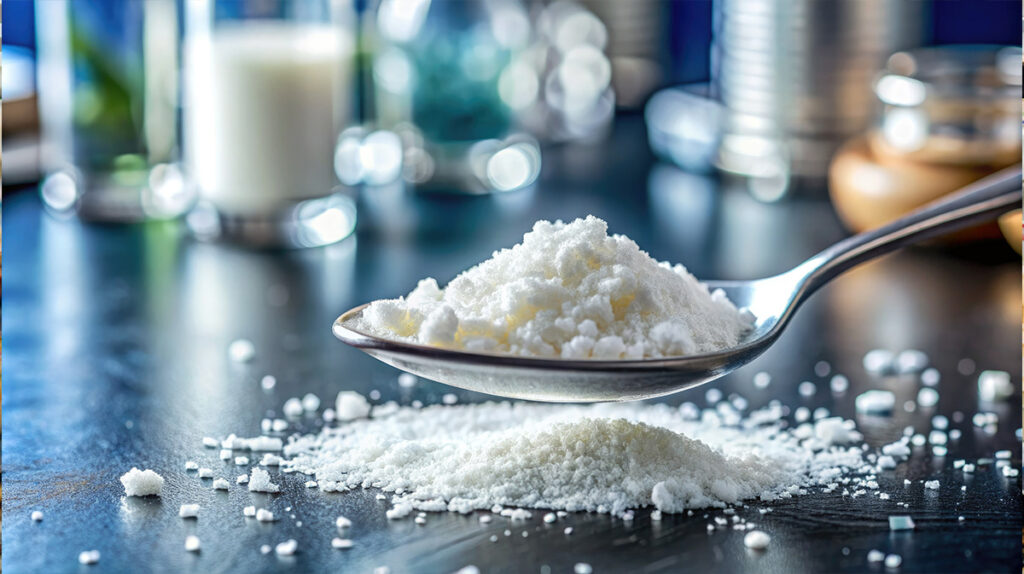Esters are chemical compounds that are formed as a result of the reaction of acid with alcohol, during which both substances combine with the release of a water molecule. In cosmetics, mainly esters of higher fatty acids with alcohols are used, which are odorless and oily substances, used as emollients, solvents and stabilizers.
What are esters?
Esters are chemical compounds that are formed as a result of the reaction of acid with alcohol, during which both substances combine with the release of a water molecule. In cosmetics, mainly esters of higher fatty acids with alcohols are used, which are odorless and oily substances, used as emollients, solvents and stabilizers.
Short-chain esters (of lower carboxylic acids and aliphatic alcohols, terpene alcohol esters, aromatic acid esters) are classified as fragrance substances, present, among others, in essential oils and determining their scent and additional properties.
The role of esters in cosmetic products
Due to their high structural diversity and numerous functional properties, esters are very often used in the cosmetics industry. They play the following roles:
- Emollients – these lubricate and soften the epidermis and facilitate the exchange of water and oxygen through the layers of the skin.
- Preservatives – support the microbiological purity of the product (inhibit the growth of bacteria, fungi and mould) and extend the durability of the product.
- Fragrances – provide the product with the appropriate smell and aroma.
- Consistency regulators – ensure the appropriate viscosity and consistency of the cosmetic, accelerate its absorption and give it the desired finish.
- Co-emulsifiers – support the action of emulsifiers, stabilizing the emulsion and preventing its separation.
- Solvents – facilitate the process of dissolving and introducing hydrophobic ingredients such as UV filters, essential oils, dyes into the formulation.
- Stabilizers – reduce oxidative processes, reduce the risk of degradation of active ingredients and improve the water resistance of the product.
Examples of ester applications in cosmetics
What is the use of the described functions of esters in practice and which substances can be used in which cosmetic groups?
The presence of esters in skin care products
Esters play important roles as emollients and emulsion stabilizers in the production of creams, balms and serums. They act as a film remaining on the skin, which has protective properties and reduces water loss through the skin and improves its hydration. One of the most popular esters used in cosmetics as an emollient is isopropyl myristate. It gives the product lightness and improves the absorption of active substances.
Sunscreen cosmetics
Due to their chemical properties, esters are ideal solvents for hydrophobic UV filters, such as octocrylene or tinosorb, and improve the water resistance of the product, extending its effect during use. Some esters (including Octinoxate, Octisalate, Octocrylene) are characterized by protective action against UVA or UVB radiation, acting as sun filters.
Hair care products
Silicone esters, such as dimethicone, are used in hair conditioners and masks. They facilitate combing, smooth hair and give it extra shine.
Makeup cosmetics
In colour cosmetics, which include lipsticks, pomades, and eye shadows, esters can act as carriers for dyes, facilitating their even distribution and extending colour durability. As an example, we can present ethyl acetate used in nail polishes, thanks to which the product is easier to apply, does not run off the nail and dries at an appropriate rate.
Literature:
- Bojarowicz H, Bartnikowska N. Kosmetyki ochrony przeciwsłonecznej. Część I. Filtry UV oraz ich właściwości. Problemy Higieny i Epidemiologii 2014; 95(3): 596-601.
- Bojarowicz H, Fronczak P, Krysiński J. Czy kosmetyki mogą nie zawierać konserwantów? Hygeia Public Health 2018; 53(2): 124-131.
- Dondela B, Chrząstek L. Wybrane estry zapachowe stosowane w kosmetyce. Prace Naukowe Akademii im. Jana Długosza w Częstochowie 2009; 13:29-34.
- Kamińska E. Rola emolientów w atopowym zapaleniu skóry u dzieci. Developmental Period Medicine 2018; 22(4): 396-403.



